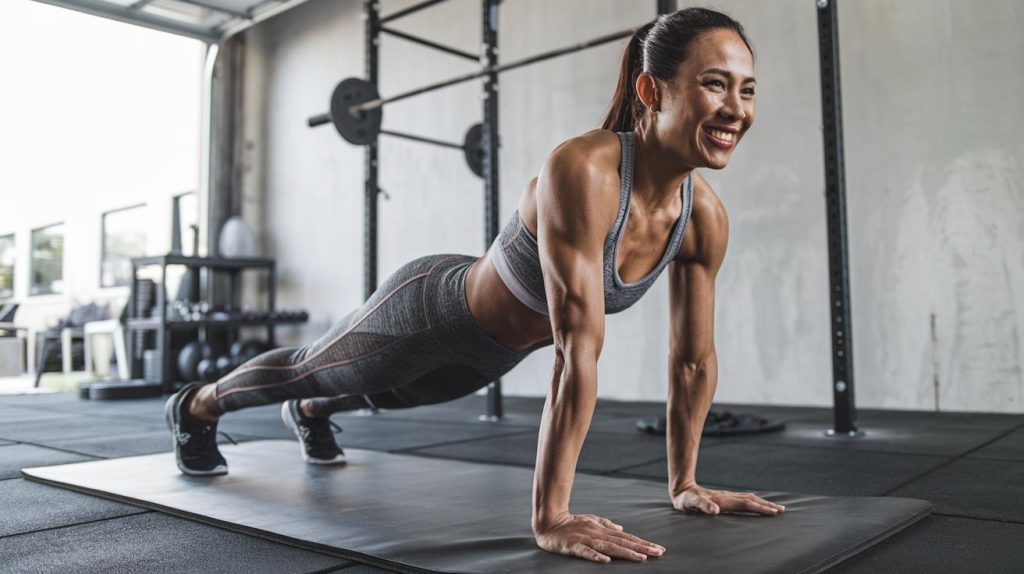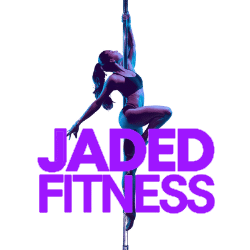Let’s talk about the gear that keeps you safe, comfortable, and progressing in your pole journey. After testing literally hundreds of products (and wasting way too much money on stuff that didn’t work), I’ve narrowed down the absolute essentials for home practice.
Before we dive in, remember: proper equipment is crucial for experiencing all the health benefits of pole dancing safely. Just like you need a quality pole (check our best home dance poles guide), you need the right accessories to support your practice.
1. Crash Mats: Your Safety Net

Why You Need One
Let’s get real – everyone falls sometimes. Even after years of teaching advanced pole techniques, I never practice without proper crash protection.
Essential Features:
- Minimum 2 inches thick
- Non-slip bottom surface
- Proper density for impact absorption
- Easy to clean (trust me, you’ll sweat)
- Portable for storage
When to Use Crash Mats
Always use mats when:
- Learning new moves
- Practicing inversions
- Working on transitions
- Training on freestanding poles
- Attempting any dynamic moves
Investment Range
- Budget: $100-150
- Mid-range: $150-250
- Professional: $250-400
Remember: A quality crash mat costs less than a single ER visit. Whether you’re using the X-Pole XPert Pro or any other model, safety equipment isn’t optional.
2. Grip Aids: Your Second Skin
Types of Grip Products
Dry Grip Options:
- Chalk-based products
- Rosin derivatives
- Powder formulations
Tacky Grip Options:
- Light hold
- Medium hold
- Competition strength
Matching Grip to Pole Type
Different pole finishes need different grip approaches:
- Chrome dance poles: Light to medium grip
- Brass dance poles: Minimal grip needed
- Stainless steel poles: Medium to heavy grip
- Silicone dance poles: Specialized silicone-friendly products
Grip Application Tips
- Clean hands thoroughly first
- Apply sparingly
- Layer gradually as needed
- Keep away from joints
- Clean pole after use (see our pole maintenance guide)
3. Knee Pads: Not Just for Beginners

Why They’re Essential
Don’t let anyone tell you knee pads are just for newbies. Even in professional dance poles studios, you’ll see experienced dancers protecting their joints.
Choosing the Right Pads
Look for:
- Non-slip grip
- Breathable material
- Proper sizing
- Adequate padding
- Machine washable
When to Wear Them
- Floor work practice
- New move development
- Extended training sessions
- Competition prep routines
4. Proper Training Wear

Essential Clothing Items
Basic Kit:
- Short shorts (yes, they’re necessary)
- Sports bras/crop tops
- Grip socks for floor work
- Light layers for warm-up
Material Considerations
Avoid:
- Loose clothing
- Zippers or buttons
- Rough seams
- Slippery fabrics
Choose:
- Four-way stretch
- Moisture-wicking
- Durable stitching
- Pole-specific designs
When to Wear What
Different moves require different coverage:
- Spins: More skin contact
- Inversions: Secure tops
- Floor work: Additional layers
- Aerial work: Full coverage options
5. Cleaning and Maintenance Kit
Essential Components
Every home pole studio needs proper cleaning supplies. When I’m teaching pole installation guide basics, I always emphasize maintenance.
Your Kit Should Include:
- Microfiber cloths
- Alcohol-based cleaner
- Steel polish
- Joint checking tools
- Grip removing solution
Maintenance Schedule
Daily:
- Quick pole wipe
- Floor clean
- Mat inspection
Weekly:
- Deep pole clean
- Hardware check
- Grip aid inventory
Monthly:
- Full stability check
- Deep mat cleaning
- Equipment inspection
Bonus: Recording Equipment
While not strictly necessary, recording your practice helps tremendously with progress tracking. Whether you’re working with portable dance poles or mounted options, seeing your form is crucial.
Basic Setup Needs
- Phone tripod
- Good lighting
- Multiple angles
- Storage solution
Recording Tips
- Film complete sessions
- Focus on problem areas
- Review immediately
- Save breakthrough moments
Storage Solutions
Organizing Your Space
Whether you’re using the X-Stage Lite or a mounted pole, proper storage keeps your equipment lasting longer.
Storage Essentials:
- Grip aid container
- Clean towel storage
- Mat hanging system
- Accessory organizer
Investment Strategy
Starting Out
Essential First Purchases:
- Quality crash mat
- Basic grip aid
- Knee pads
- Two sets of practice wear
Upgrading Over Time
As you progress to more advanced moves on poles like the Lupit Diamond G2, consider:
- Competition-grade grip aids
- Professional recording setup
- Premium protective gear
- Specialized training wear
Safety Considerations
When to Use What
Different accessories serve different purposes. Follow our guide to teaching pole dance for proper progression.
Maintenance Checks
Regular equipment checks prevent accidents:
- Mat integrity
- Grip aid freshness
- Clothing wear
- Recording equipment stability
Common Mistakes to Avoid
Accessory Errors
- Using too much grip aid
- Neglecting mat cleaning
- Wearing inappropriate clothing
- Skipping safety gear
Storage Mistakes
- Leaving grip aids open
- Storing mats improperly
- Neglecting cleaning supplies
- Disorganized spaces
Future Investments
Advanced Accessories
As you progress, consider:
- Competition-grade equipment
- Professional recording setup
- Specialized training tools
- Performance accessories
Final Thoughts
Remember, proper accessories aren’t just about comfort – they’re about safety and progression. Whether you’re practicing on beginner dance poles or advanced equipment, the right gear makes all the difference.
Start with the essentials, maintain them properly, and upgrade as needed. Your pole journey will be safer and more enjoyable with the right support equipment.
Stay safe and keep spinning!
-Jade
P.S. Setting up your home pole studio? Don’t forget to check our complete pole installation guide for proper setup basics.

